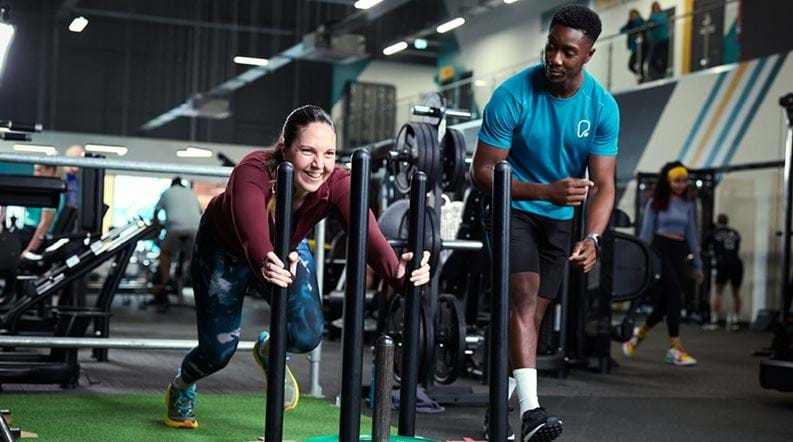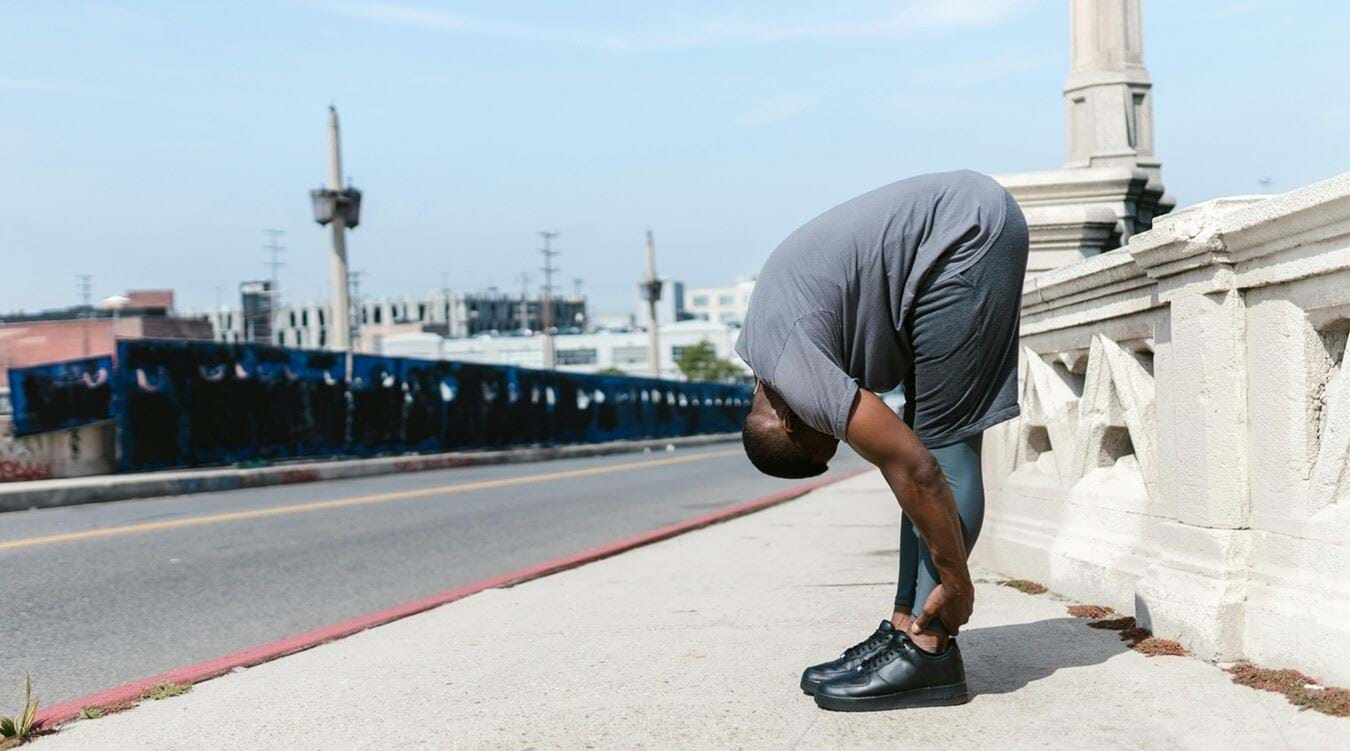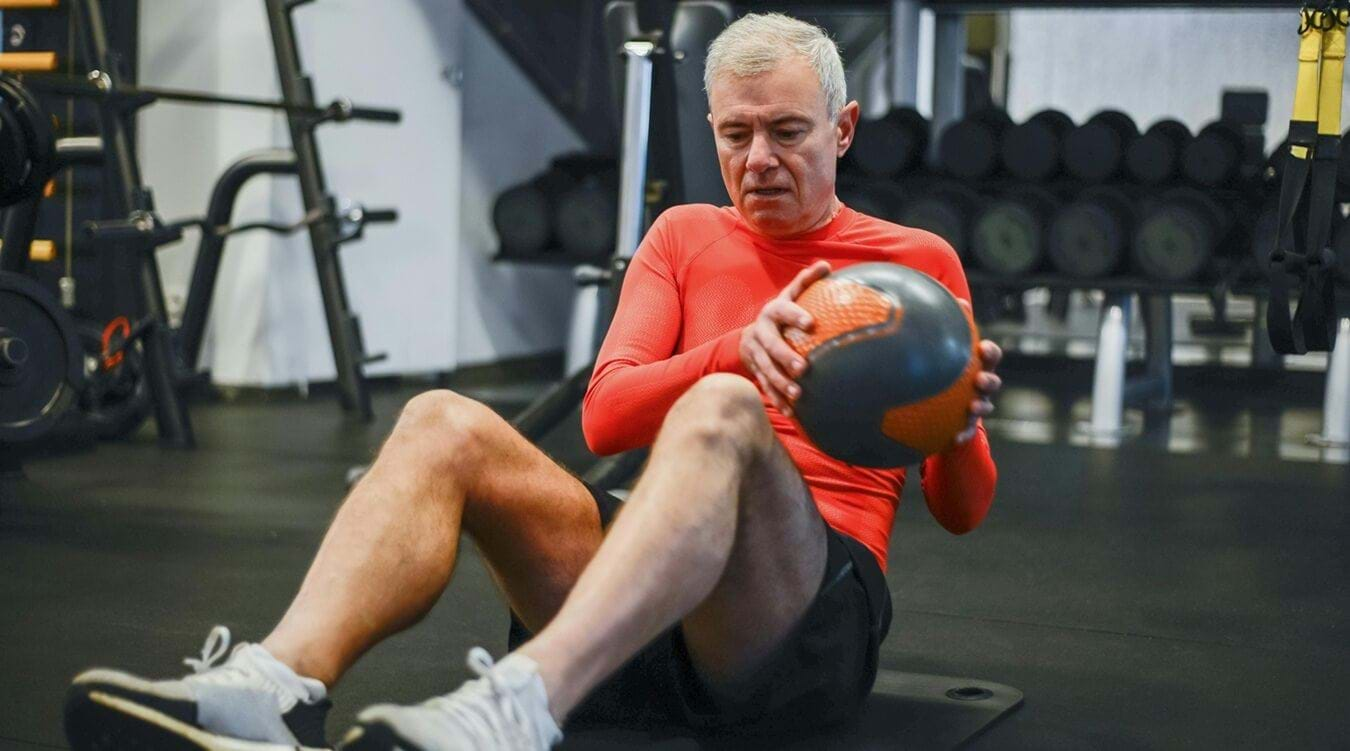Functional Fitness Workouts: Building Real-World Strength

What Are Functional Workouts | Functional vs Traditional | Key Benefits | Core Principles | Best Exercises | Home Routine | Workouts | Create A Plan | FAQS
There are many reasons people choose to work out, but an often overlooked aspect of training is the ability to improve the way you move day to day. Sedentary lifestyles can lead to people losing range of motion and becoming stiff, resulting in more injuries and poor quality of life, especially as they age.
Functional fitness is a smart way of training that combines strength, mobility, balance, and coordination to improve your natural movement patterns. Instead of isolating individual muscles like bodybuilding, or working on sheer strength like weightlifting, functional training strengthens your body with multi-joint exercises and natural movement patterns.
Here, PureGym Sunderland based Personal Trainer Caitlin Coates shares everything you need to know about functional training, including functional fitness workouts you can try.
What Is a Functional Workout, and Why Does It Matter?
First things first, what is functional workout training? It's a form of strength and resistance training that makes you more efficient across real-world movements. Rather than targeting small muscle groups, functional workouts train the body to use multiple muscle groups in coordination together over natural movement patterns - the way your body is designed to move.
Functional Workout Program vs Traditional Strength Training: What's the Difference?
The functional workout program approach is different to traditional strength training in a few ways, including:
The type of exercises
Traditional strength training, like bodybuilding or hypertrophy training, uses free weights or gym machines to build strength and muscle mass. Typical strength training workouts include compound movements like squats and deadlifts, but will also have isolated movements that focus more on individual muscle development, for example dedicated bicep exercises.
Functional training emphasises movement quality over the amount of weight you lift. While compound movements have their place in functional workouts, they also incorporate multi-planar movements - forward, backward, sideways, and rotational - that train balance and agility at the same time.
Functional workouts are often more time-efficient, too, because they work multiple muscle groups at the same time. In this way, you train strength, balance, and mobility in single exercises rather than needing separate time for each training outcome.
The workout goals
Traditional strength training workouts are usually built around two main objectives: improving strength, and building muscle mass, although they can have other goals such as improved power and sports performance.
The main purpose of functional workouts is to improve range of motion and strength to better carry out movement patterns used in daily life, such as lifting, bending, twisting, and carrying.
The results you can expect
There are lots of health benefits to strength training of all styles. The main difference in results between traditional and functional focused strength training is that traditional weight lifting will see more in gym improvements, such as increased weights lifted, and more body recomposition, while functional workouts will see better movement quality in day to day life.
Key Benefits of Functional Fitness
Why is functional fitness training so popular with everyday fitness fans and athletes? It's because people are realising how many benefits functional workouts have, and how they extend into everyday life:
Boosts core stability and balance to improve movement quality
Improves flexibility and mobility to maintain joint health
Reduces risk of injury through better movement mechanics
Saves time by using multi-muscle exercises
Enhances sports performance and overall fitness
Functional training builds strength, balance, mobility, and coordination to help with everyday activities like carrying shopping, climbing stairs, and playing sports. It's different to traditional strength training, which is great for building muscle size but doesn't always translate into daily life movements.
Core Principles of a Functional Training Workout
Effective functional training workout sessions follow key principles. Movement quality and multi-joint exercises are the foundations of this style of training, with functional workouts often using uneven loads, odd objects, or different surfaces to challenge stability and balance.
Progressive overload is important in functional training, but it’s often incorporated through increased complexity, speed, or range of motion rather than just adding weight.
Best Functional Fitness Exercises for Strength, Mobility, and Balance
Functional strength workout exercises work lots of areas at the same time, but it’s useful to know some key exercises that are the best functional fitness exercises for different goals.
For strength development:
Deadlifts - to build powerful legs, glutes, and core strength.
Kettlebell swings - explosive power for hips and hamstrings.
Weighted squats - for full-body strength and stability.
Push-ups & pull-ups - classic bodyweight staples for upper body strength.
To target balance:
Single-leg Romanian deadlifts - for strength + stability for hamstrings and glutes.
Step-ups on bench/box - improves coordination and balance.
Single-leg glute bridges - strengthens posterior chain while testing balance.
Farmer's carry with uneven weights - builds grip, core, and anti-tilt strength.
Exercises can be given more of a challenge by varying factors such as width of hand or foot placement, using uneven weights between different sides, or having one foot or hand on a different height to the other. Changing these up each week can help to develop strength and stability in different positions over time, rather than focusing on just increasing the load each week.
Functional Workout Routine You Can Do at Home
The best home functional workout routine requires little to no equipment. With the right programming, bodyweight exercises can be enough for a good full body functional workout, but if you want to add some equipment for home workouts, you can use resistance bands, a stability ball, a kettlebell, or a pair of dumbbells.
Your home functional training workout should include all the key movement patterns - squatting, lunging, pushing, pulling, and rotating - to challenge lots of muscle groups whilst working on your coordination and balance. Try the beginner workout below which can be done at home with no equipment!
Example Full-Body Functional Workouts
PureGym Personal Trainer Caitlin Coates put together these sample workouts for you to try.
Full-Body Functional Workout for Beginners
Perform 2-3 rounds, resting 30-60 seconds between exercises.
Bodyweight squats (3x12) - learn proper form and movement mechanics.
Glute bridges (3x12) - strengthen hips and protect your lower back.
Modified push-ups (3x8-10) - build pressing strength and core stability.
Step-ups (3x10 per leg) - improve balance and unilateral strength.
Bird-dogs (3x12 per side) - develop core stability and spinal control.
Intermediate Functional Strength Workout for Building Power
Kettlebell goblet squats (3x10) - add load for strength and stability.
Romanian deadlifts (3x8-10) - strengthen hamstrings and core.
Push-ups or dips (3x12) - build upper body pushing power.
Walking lunges (3x12 per leg) - add mobility and balance challenge.
Plank with shoulder taps (3x30s) - strengthen deep core and anti-rotation muscles.
Creating a Personalised Functional Workout Plan
Your functional workout plan should reflect your goals, fitness level, and how much time you have. A typical weekly structure might include 3-4 functional training sessions with different emphasis areas.
For example:
Monday - full-body session
Wednesday - upper-body focused functional work
Friday - full body session
Saturday - lower-body emphasis
Each session should last 30-45 minutes and include a warm-up and cool-down.
The key to successful functional training is consistency and progressive challenge. Start with 2-3 sessions weekly, focusing on movement patterns before adding complexity or load.
FAQs About Functional Fitness
Start with 2-3 sessions weekly, allowing rest days between sessions. As your fitness improves, increase frequency or session duration based on your goals and recovery capacity.
Functional training is great for strength, balance, coordination and general fitness benefits, but if your goals are pure strength you might need to train with traditional lifting methods. Many people combine both for all-round fitness.
Ready to start functional fitness training? Book a session with one of our Personal Trainers who can design a personalised programme and help you get started. Find your nearest PureGym today.


